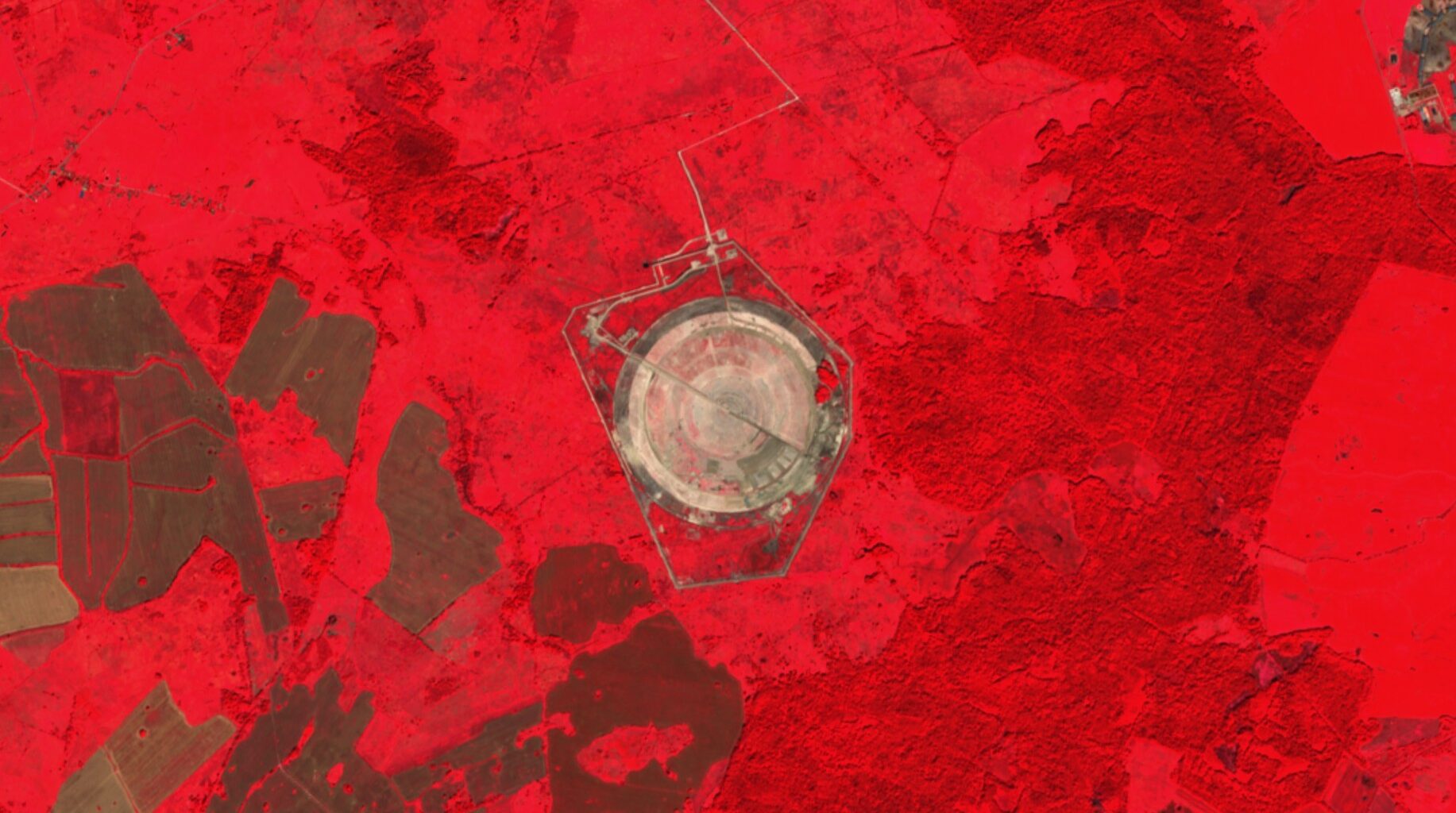Russia has been building a listening station on the edge of the Baltic Sea for the last two years, satellite images appear to show.
Open-source researchers at the investigative project Tochnyi, which says it “aims to accurately report” on the Russia-Ukraine war, said the potential spying facility is in the Kaliningrad region—the Russian semi-exclave sandwiched between NATO members Poland and Lithuania. They report it began taking shape in March 2023 and is almost finished.
The project says they think that the site in Kaliningrad’s Chernyakhovsky district, just south of an air base used by Russian navy’s Baltic Fleet, is a circularly disposed antenna array, a “military-grade antenna array designed for radio intelligence or communication.”
Why It Matters
CDAA sites and networks, widely used by the United States and the Soviet Union during the Cold War, serve the military or intelligence service through signal direction finding, electronic surveillance, and submarine communications.
Russia could use the purported facility to intercept NATO radio communications and triangulate their positions.
Newsweek has contacted the Russia’s Defense Ministry, via email, for comment.
The Site
The apparent antenna array, around 60 miles from the Baltic coast, could span up to 1,600 meters in diameter, analysis of the satellite imagery shows, placing it “well above the size range of known CDAAs,” Tochnyi said.
While it is difficult to “draw a definitive conclusion” about the site, the investigators said, there are multiple features to suggest it is a CDAA.
These include a “circular configuration with several evenly spaced excavation points,” which can accommodate vertical antennas, “a radial development of excavations from a central hub, suggesting the potential future presence of buried cables or signal feedlines” and the establishment of a security perimeter.
Tochnyi researchers first noticed the site during routine satellite image reviews because of its “unusual geometry, impressive size, remote location and potential strategic significance.”
As of mid-August, the site had a completed boundary wall, an access point with a checkpoint, and a “pattern of concentric circles,” they said. At least six concentric rings can be seen, along with soil movement at even spacing along the whole perimeter.
“These look like excavation points that could host poles, which can be used to support antennas,” Tochnyi said.
Images show how the surrounding forest has been excavated over time, “with most of it by then flattened and the perimeter walls under construction” by July 2023.
The Location
“The placement of a CDAA-like structure in this region is strategically logical,” Tochnyi said. “Such an installation would enable Russia to monitor NATO’s electronic communications across Eastern Europe and the Baltic region.”
It could communicate with submarines in the Baltic Sea or the North Atlantic and “support passive intelligence gathering, aligning with Russia’s broader electronic warfare doctrine.”
Heavily militarized Kaliningrad is an extremely geopolitically important region to the Kremlin. It is Russia’s westernmost territory and guarantees its freedom of navigation and overflight in the Baltic Sea.
“While still under construction, this new installation in Kaliningrad is likely a core node in Russia’s strategic signals intelligence and communications architecture,” Tochnyi analysts said. “It represents a bridge between Cold War technology and modern military doctrine, one that values deniability, surveillance and information dominance.”
The Context
The apparent construction site comes as the world waits to see if anything will come from U.S. President Donald Trump meeting with Russian President Vladimir Putin on August 15.
Held at Joint Base Elmendorf-Richardson in Anchorage, the summit marked Putin’s first trip to the U.S. in a decade. But the talks ended without a notable deal after a more than two hour closed-door session.
“We haven’t quite got there, but we’ve got some headway,” Trump said at a joint appearance with Putin afterward. “There’s no deal until there’s a deal.”
U.S. Special Envoy Steve Witkoff said last Sunday that Putin indicated he is open to the U.S. agreeing a security guarantee with Ukraine resembling NATO’s Article 5 protection. This is “the first time we had ever heard the Russians agree to that,” he told CNN.
Washington is pushing to arrange a summit for Putin and Ukrainian President Volodymyr Zelensky but Russia’s foreign minister Sergey Lavrov said on Friday that there are no plans yet for a meeting between the two.
“Putin is ready to meet with Zelensky when the agenda is ready for a summit, and this agenda is not ready at all,” he told NBC News’ Meet the Press.
“When President Trump brought…those issues to the meeting in Washington, it was very clear to everybody that there are several principles which Washington believes must be accepted, including no NATO membership, including the discussion of territorial issues, and Zelensky said no to everything,” he said.
Zelensky has since accused Moscow of “doing everything they can to prevent the meeting from taking place.”
